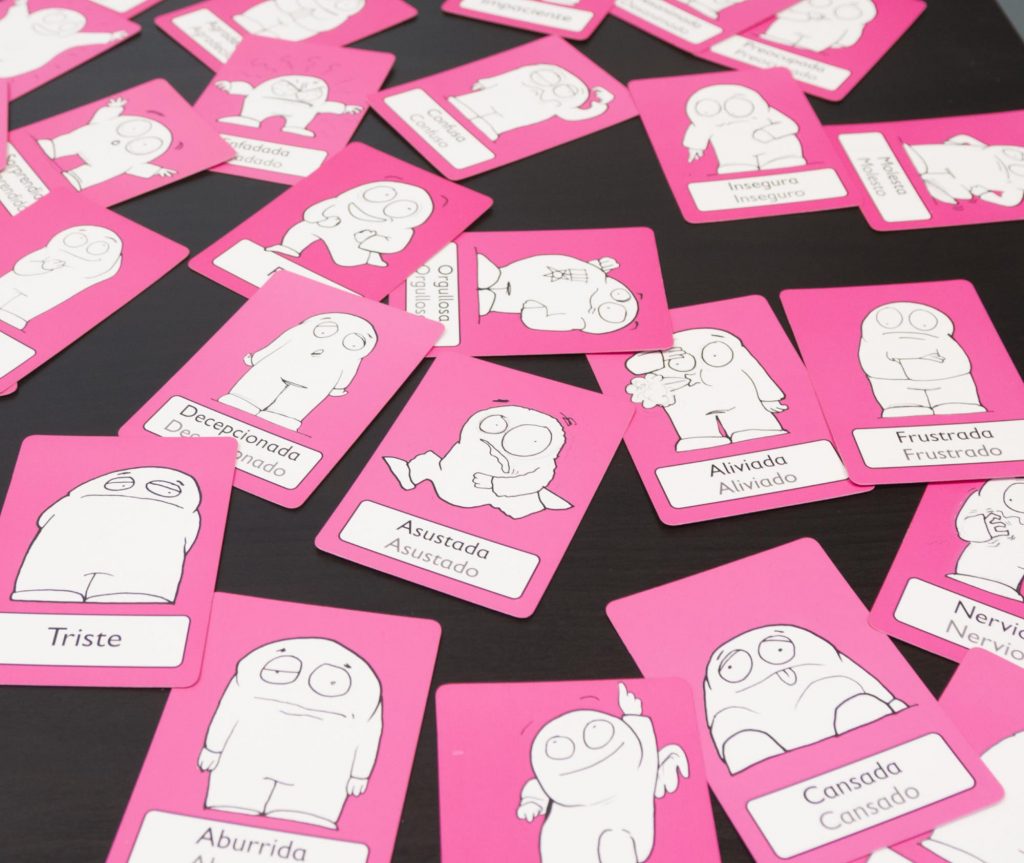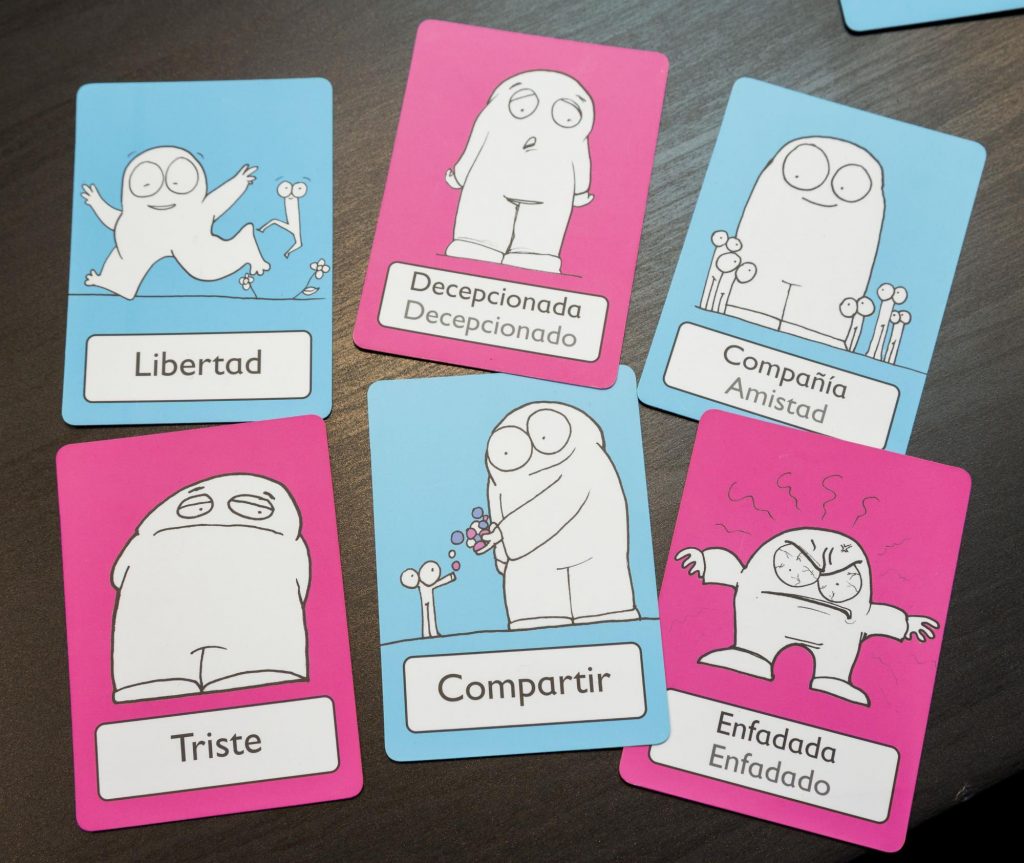Sandra Esteban
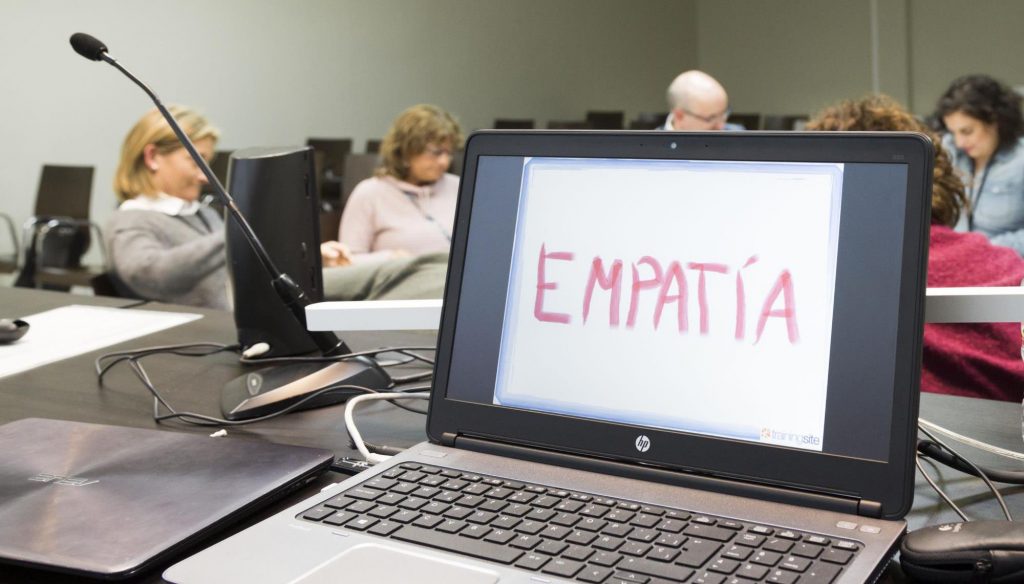
The demands of everyday life, the fragmentation of work spaces (both physical as well as organisational) and the excess of technification, means that we are increasingly working in a more isolated and disconnected way from each other.
This reality, which can be found in a large number of organisations, leads to a deterioration of our communicative capacity, which in an unperceivable way is passed on to our mental processes, our habits and our relations, and ends up affecting the labour world.
Organisations need to improve their relational quality, both external and internal. Developing a project for improving these relational skills means providing tools that allow us to tackle the challenges that todays’ society demands.
To be consistent with the integral management project based on Social Responsibility, as well as with the result of the consultations with the staff, promoted by the Committee for Safety and Health at Work of the Museu Nacional d’Art de Catalunya, it is necessary to improve the communication processes, foster participation, conciliation and personal development of the team.
There is often a lack of clarity in the communication, unclear assumptions, moralistic judgements, comparisons, denial of responsibility, defensive attitude … all of these being aspects that hinder the message, cause discomfort to one or other interlocutor and generate conflict.
It is therefore clear that internal communication is one of the weaknesses of organisations and also of the museum.
It is an aspect that requires improvement in many senses: more transparency, more fluency in the work circuits, etc. A relation of trust is basic for understanding. A well communicated and trusting team will work better, be more motivated and work in a more efficient way.

That’s why it is important to open up new spaces of relation that foster communication and empathy between people, recognition, talent and motivation. To feel better with yourself, to get to know yourself, to have more tools for managing all types of situations, also makes it better for us in the work environment.
In the last training plan, the workers of the of the museum requested courses aimed at reducing stress, improving leaderships, and time management. The Museu Nacional d’Art de Catalunya has dedicated its efforts towards such an important issue as the wellbeing of its workers.
If we are happier in our work, more connected and know how to communicate better with our colleagues, the teamwork will be more efficient, we will be more productive and effective.
«The way we communicate with others and with ourselves ultimately determines the quality of our lives»,
Anthony Robbins
By collecting the proposals of the workers, the museum has consolidated a line of training courses focused on improving welfare. This line began last year with the course of Mindfulness, which was highly rated by the participants.
Course of affective communication
With the aim of extending the training proposals of relational contents, last November the first edition took place of the training in Affective communication and confidence building, given by professor Davide Nuzzolo, with the participation of around fifteen people.
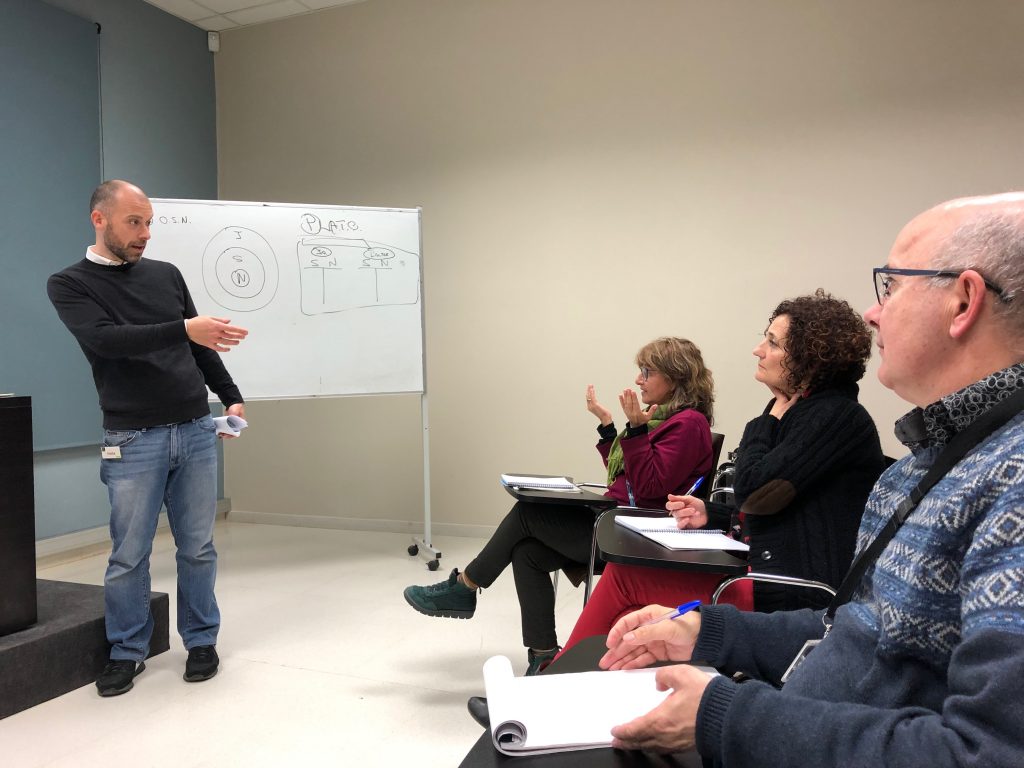
The aim was to provide us with skills for:
- Managing communication better in all the fields, managing conflicts better and taking care of relations.
- Generating habits that foster emotional balance and affective communication.
- Focusing on communication from a paradigm of win-win.
- Learning and practising ways of behaving in front of difficult situations.
The training was carried out in a friendly atmosphere, with respect, security and confidentiality. Judgements were left out and, when they appeared, we processed them all together so as to learn to cooperate and to resolve the conflict as a group. The attendees committed ourselves to the course, we were willing to open ourselves up, and the participation was always active and voluntary.
But, what is affective communication? In reality, it is what is known as Nonviolent Communication (NVC).
What is nonviolent communication?
In Affective Communication or Nonviolent Communication, the relation flows, there are ties, connection and proximity between the interlocutors.
We go from assessing what is correct or incorrect to placing the focus on feelings and needs, met or not met, mine and of others.
A view of the reality was suggested in which everything we do, we do to meet a need, normally not met.
Our feelings are not provoked by others, as we think, for example, when we say “you make me nervous”. They are provoked by our own satisfied or not satisfied needs, and in this way we are responsible for what we feel.
One part of NVC is honest expression, and the first step starts with an observation: What has happened? What did they say? Detecting and being able to describe the stimulus. In this point it is important to separate the evaluations, the pre-judgement and the judgement of the facts. Observations are specific and they are the opposite of generalizations.
The second step is related to my feelings in front of what I have observed: How do I feel when I see this, when I hear that said?
And as feelings are the gateway of needs, the third step consists of linking this feeling to the need that I have in this moment: depending on the feeling I have, I can understand if the need is satisfied or not.
Finally, I am able to formulate a request to myself or to another, because I now know what I need and how I would like to satisfy this need. When doing so I have to have clear what need I have. It is necessary to make requests that are clear, concise and specific. A request is an invitation to an honest response from the other and, therefore, to be disposed to receiving a “no” for the answer.
Feelings and needs
During the training we worked with a list of feelings and needs. Having a minimally rich vocabulary of feelings to know ourselves and to express our needs better. And we have realized that we have little practice at “looking at ourselves” and putting into words how we feel.
The social conception doesn’t help, either, that vulnerability, showing what we feel, is a sign of weakness, when it is quite the opposite: you need to have great strength to show that you are vulnerable. It is a very brave act to show yourself to be authentic and vulnerable.
The denial of responsibility
Nonviolent Communication also deals with the denial of responsibility or having a low level of awareness that we are responsible for our feelings, thoughts and actions, and placing the cause on external factors.
That’s why it’s necessary to place the accent on speaking in the first person, making myself responsible for what I am saying and of the experience that I am having. Giving up impersonal formulas or generalizations to speak of me, for me and from ME.
They are formulations as for example, instead of “you make me feel nervous”, to say “when I hear you say that I feel nervous”. Or to replace “when they say that to you I don’t like it” by “when they said that to me I didn’t like it”. Or to use “I think” instead of “we think” or “the people think”.
Being responsible for one’s own feelings means seeing that these are related to my needs: therefore their cause is interior, not exterior. Even though they are related to an external stimulus (somebody says something or something happens) they are related to how I evaluate these facts. If it is like this, then, I am not responsible for the feelings of others, that are related to their needs, but what I do say and do can be a stimulus for them, and I should be aware of this.
Empathy and listening
Self-empathy and empathy
Another very interesting part of the Nonviolent Communication is empathic listening.
«The best way I can get understanding from another person is to give this person the understanding, too. If I want them to hear my needs and feelings, I first need to empathize»,
Marshall Rosenberg
When we have empathy we are present in front of our interlocutor, we give them time and space and we try to perceive their reality.
We have learnt that there are a whole series of attitudes that are not empathic and that make affective communication difficult. For example: to advise, compete, feel pity for, console, justify, correct or explain a similar story to the one you are telling – that doesn’t mean having empathy.
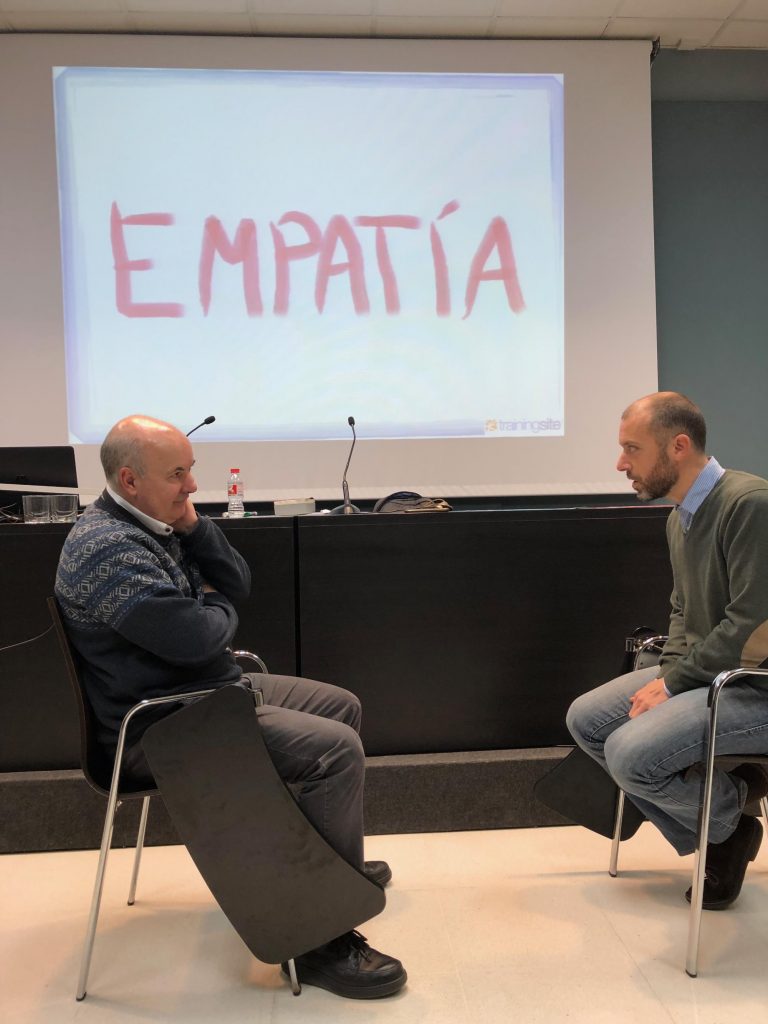
In different practical exercises we have confirmed that having empathy is a matter of intention. Just listening in silence, without giving an opinion or advice, for example. And after listening, reflecting or contrasting what we have understood to confirm that it is indeed what the other person has wanted to say.
Apart from being empathetic with the other, self-empathy is important. Empathy towards oneself is the previous step. When we have a moment of agitation, emotional revolution or we feel a bit stressed, we have learned to use it. This consists of self-observation of the external stimulus that has impacted us, how we feel and what we need in order to subsequently be able, if necessary, at a later stage to be empathic with the other and to participate in the dialogue with the interlocutor.
Oh surprise, surprise, listening isn’t what we thought it was
We saw the difference between different ways of listening:
- Ignoring listening: ignoring the interlocutor
- Selective listening: without totally paying attention, listening now and again
- Active listening: listening to understand
- Empathic listening: putting yourself in the shoes of the other to understand them
Listening is an exercise of empathy. Putting yourself in the shoes of the other so as to completely understand what the interlocutor is explaining, what he or she feels and needs. And often looking at the interlocutor in the eyes, and being present without distractions and without interrupting, simply isn’t enough. By trying to listen in silence and understand the experience of the other person we getting close to empathy.
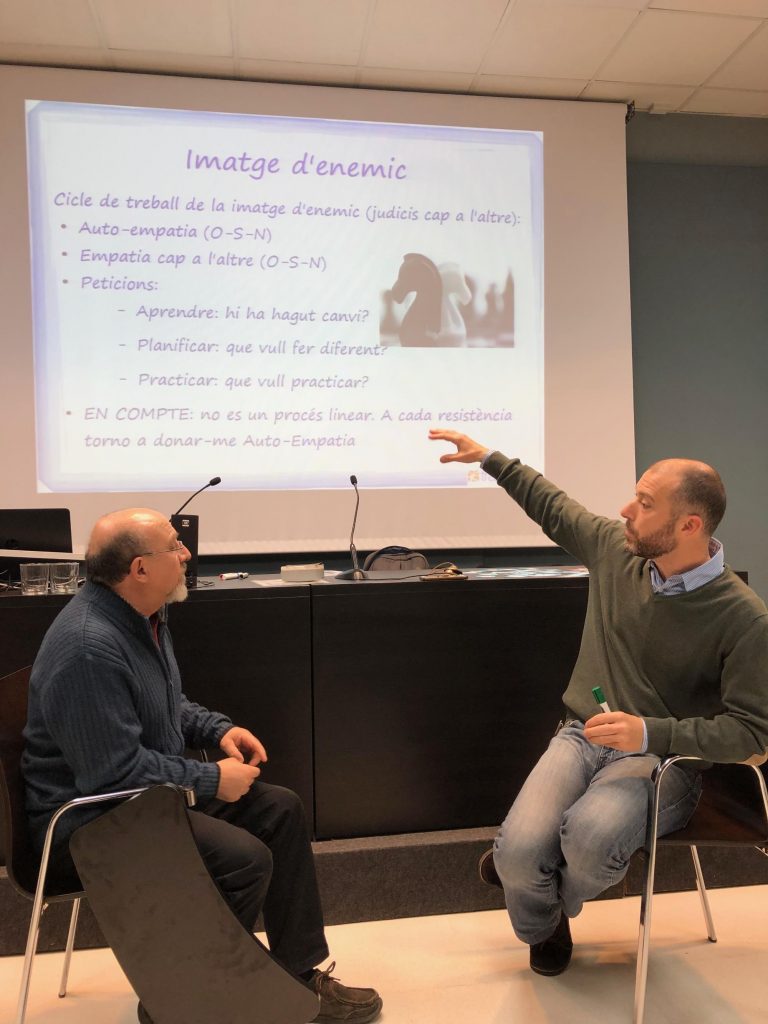
I thought I knew how to listen. But how difficult it is to not interrupt, to not replicate some anecdote or similar experience to the one they are explaining to me, or to give advice without asking if what the other person needs is my opinion or they just wanted to get it off their chest, to be listened to and understood.
Practising Nonviolent Communication
During the different sessions, we had the opportunity to put into practice different aspects of communication: seeing the difference between the diverse ways of listening to ourselves, giving us empathy and practising it with real examples of the work environment, family or intimate of each one…
We worked in pairs on the most conflicting aspects of communication and how they can be reversed and made positive. We learned that we need time and training to achieve empathy and the NVC in an open and frank manner. In short, being more aware and with more self-knowledge, and everyone at their own pace.
What do we celebrate on finishing this training?
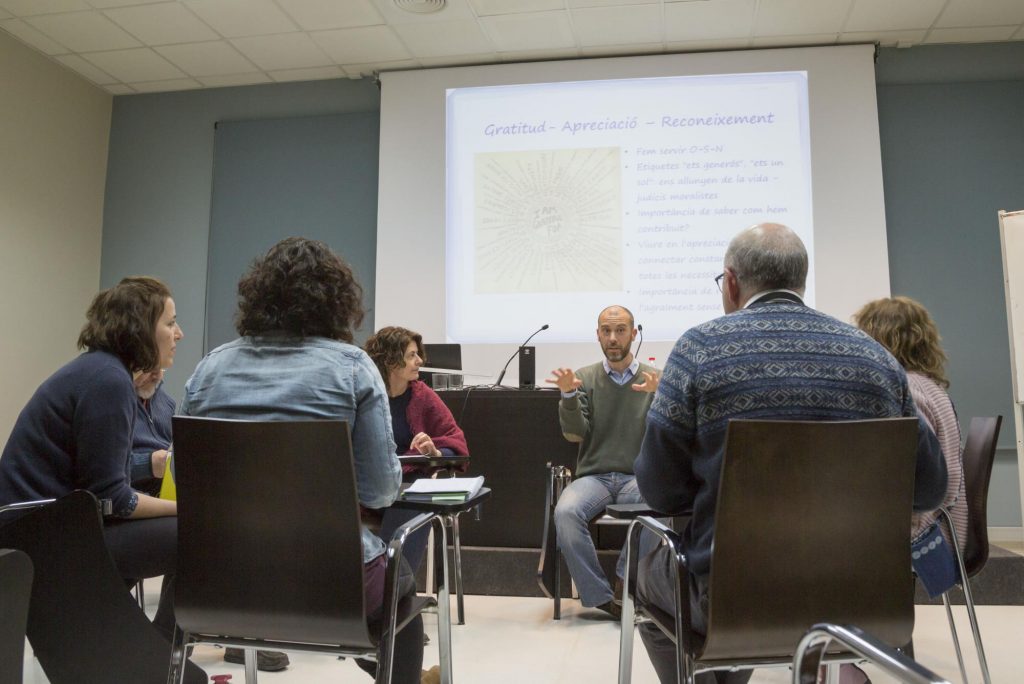
- Learning resources to be able to communicate better in any work or personal situation.
- Getting to know each other: more self-knowledge and more knowledge of classmates. It seems incredible that despite knowing each other and working together for some years (some up to 15 years working in the same institution), we had not had the opportunity to coincide in the museum or have a minimally close relation.
- Creating a relation of complicity and trust and generating special ties during the sessions
- Building a small but very strong support network.
- And, above all, being certain that it is possible to improve, both at a personal and an institutional level. We have become agents of change.
Yes, we are agents of change. The course has “empowered us”, also as colleagues of the museum, it has helped us to be convinced that we can communicate better, working better and making the museum a bit better.
Most of the people who did the course have recommended it, and strongly recommend it to the rest of our colleagues.
Recently, the second edition of the course has been held and a second part, Affective Communication in-depth, which has allowed us to consolidate a little more of what we learned in the first edition, and to continue gaining greater awareness of how we communicate.
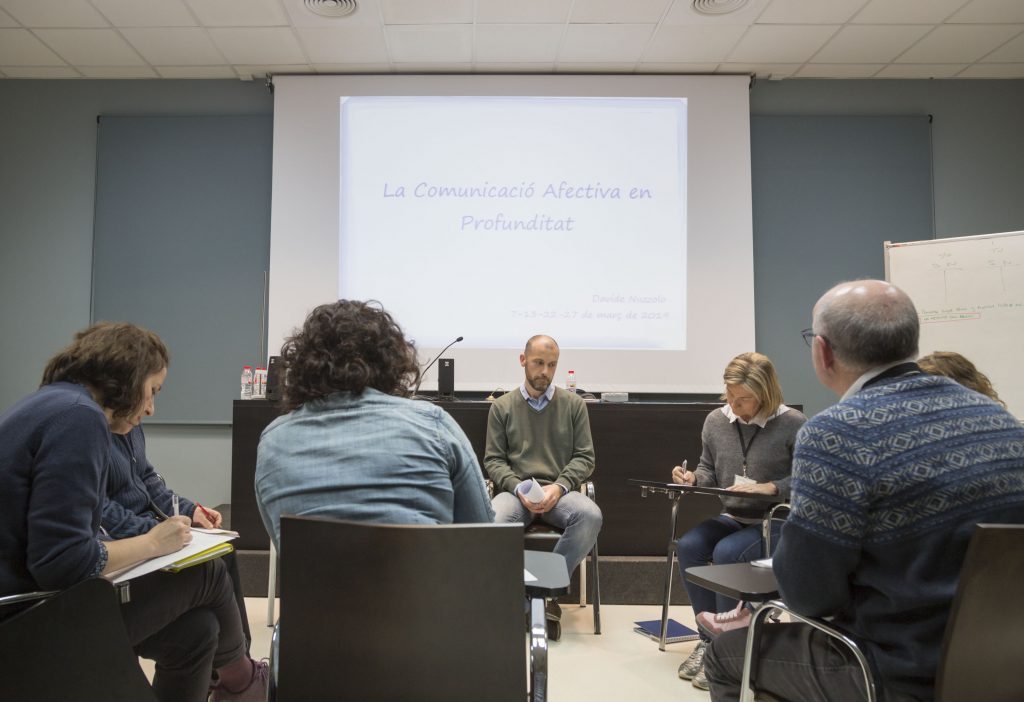
Photo: Marta Mérida
Recently, the second edition of the course has been held and a second part, Affective Communication in-depth, which has allowed us to consolidate a little more of what we learned in the first edition, and to continue gaining greater awareness of how we communicate.
As such, the museum has organized a series of monthly working sessions for the forthcoming months so as not to lose the practice and to continue working on Nonviolent Communication which it has called the School of Affective Communication.
Our personal well-being has a positive impact on our environment, on our colleagues and also on our work.
We know that it takes time and training, but it’s only just begun!
Related links
Mindfulness in the Museu Nacional
The Center for Nonviolent Communication
Projectes digitals

